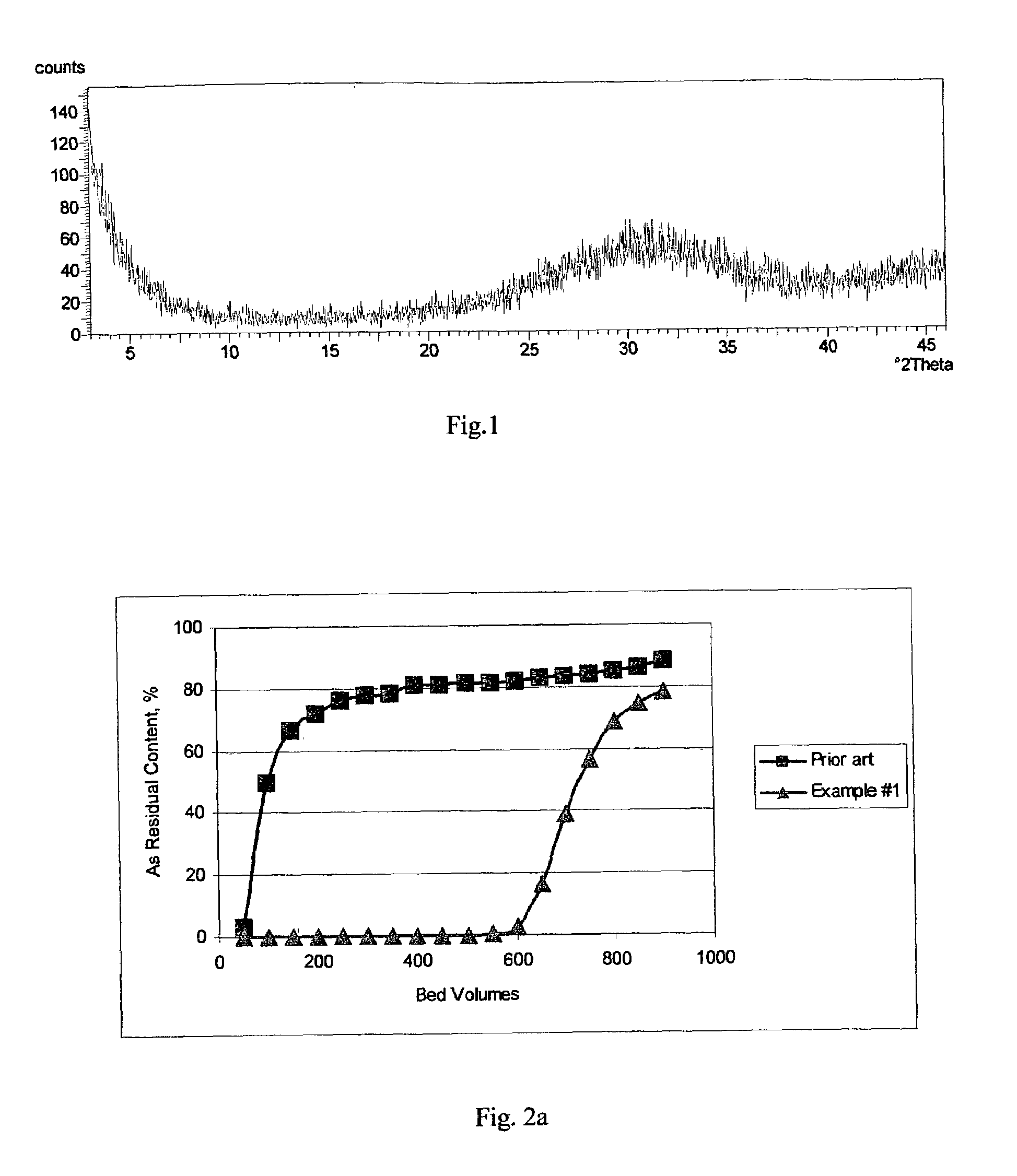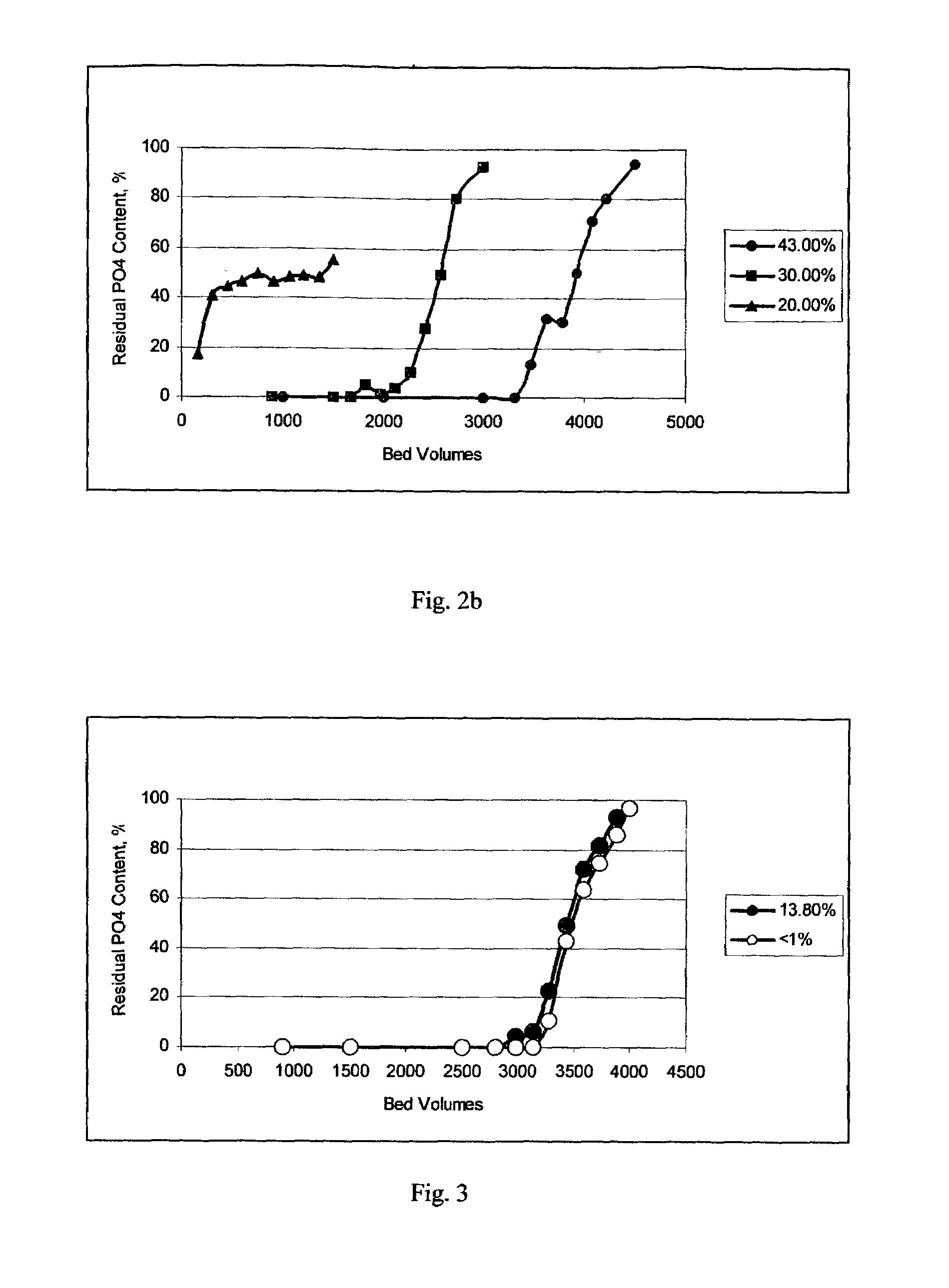Hydrous zirconium oxide, hydrous hafnium oxide and method of making same
- Summary
- Abstract
- Description
- Claims
- Application Information
AI Technical Summary
Benefits of technology
Problems solved by technology
Method used
Image
Examples
example 1
[0045]The inventive amorphous hydrous zirconium oxide was prepared in all the examples. In this example the material was prepared according to the following procedure. In the first stage, a slurry was made containing 250 g of basic zirconium sulfate (i.e., 40% ZrO2) (MEI, HCP PP142A), with a predetermined particle size of 50 to 60 microns, in 1.0 L of 0.1 M H2SO4. Under constant mixing the required amount of 30 wt. % NaOH solution was added gradually to raise the pH of the reaction mixture to 11.5. The slurry was transferred into an autoclave, sealed and heated at 120° C. for 6 hours under constant stirring. Then, the product of conversion was filtered, washed with 0.5 kg of water and re-slurried in 1 L of water. To the HZO suspension 30 wt. % HNO3 solution was added gradually, effective to adjust the pH to 6.0. Then, the HZO was filtered, washed with 1 kg of water and dried at 100° C. for 12 hours in air (at ambient pressure).
[0046]The dried product had a particle size of 45 to 55 ...
example 2
[0047]All of the operations and amounts of reagents used in Example 1 were used in this example, with the only difference being that thermal treatment of basic zirconium sulfate was carried out at 100° C. and ambient pressure for 24 hours. The dried product had a particle size ranging from 45 to 55 microns. According to elemental analysis the sulfur content was 2 / g. The average pore size was 30 Å. Water loss at 209° C. (LOD) was <1%.
example 3
[0048]All of the operations and amounts of reagents used in Example 1 were used in this example, with the only difference being that 30 wt. % KOH solution was used instead of sodium hydroxide. The dried product had a particle size ranging from 45 to 55 microns. According to elemental analysis the sulfur content was 2 / g. The average pore size was 40 Å. Water loss at 209° C. (LOD) was <1%.
PUM
| Property | Measurement | Unit |
|---|---|---|
| Temperature | aaaaa | aaaaa |
| Temperature | aaaaa | aaaaa |
| Temperature | aaaaa | aaaaa |
Abstract
Description
Claims
Application Information
 Login to View More
Login to View More - R&D
- Intellectual Property
- Life Sciences
- Materials
- Tech Scout
- Unparalleled Data Quality
- Higher Quality Content
- 60% Fewer Hallucinations
Browse by: Latest US Patents, China's latest patents, Technical Efficacy Thesaurus, Application Domain, Technology Topic, Popular Technical Reports.
© 2025 PatSnap. All rights reserved.Legal|Privacy policy|Modern Slavery Act Transparency Statement|Sitemap|About US| Contact US: help@patsnap.com


